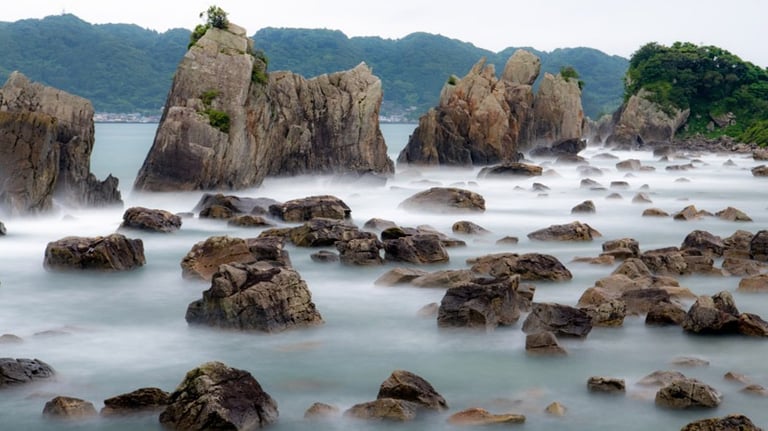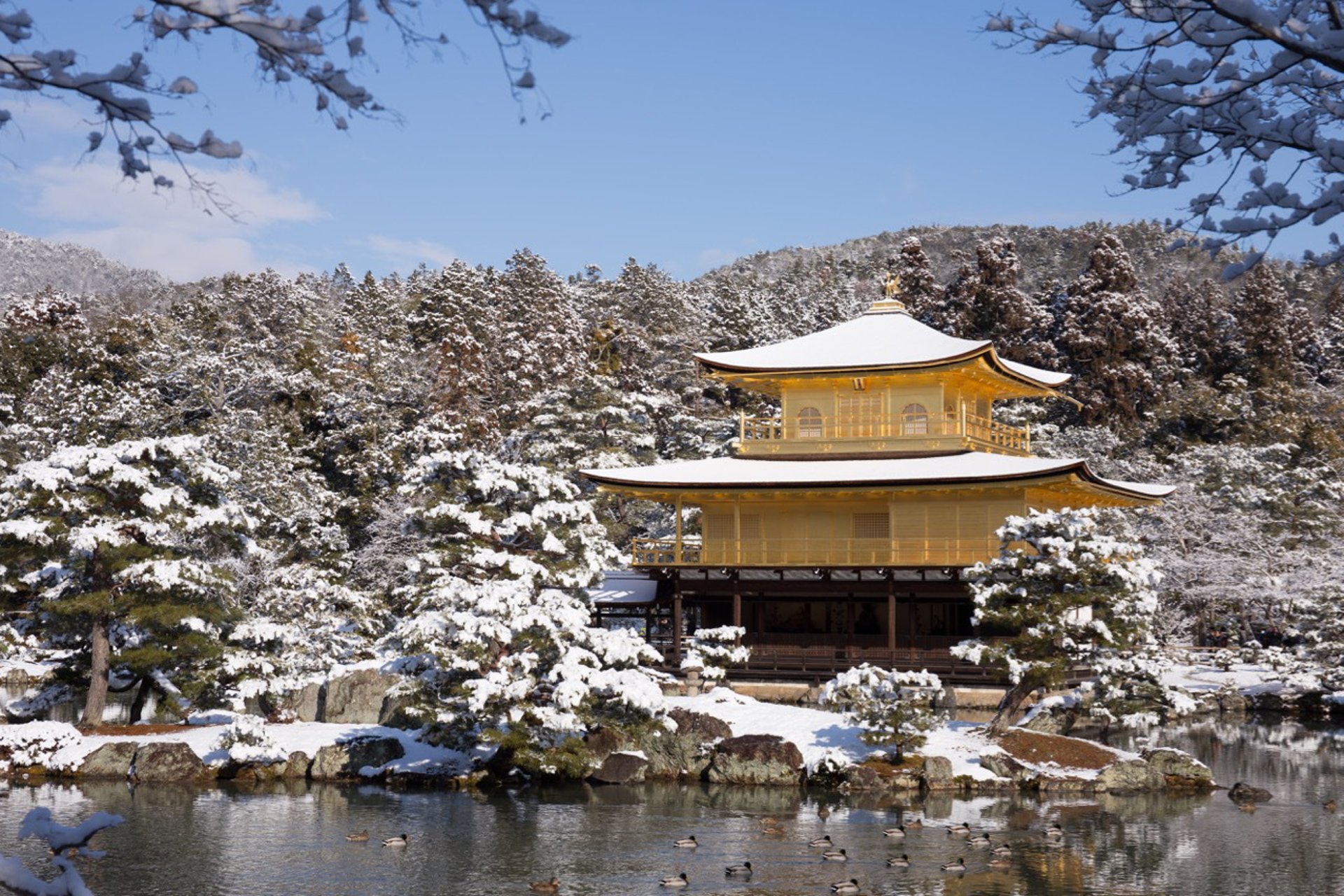
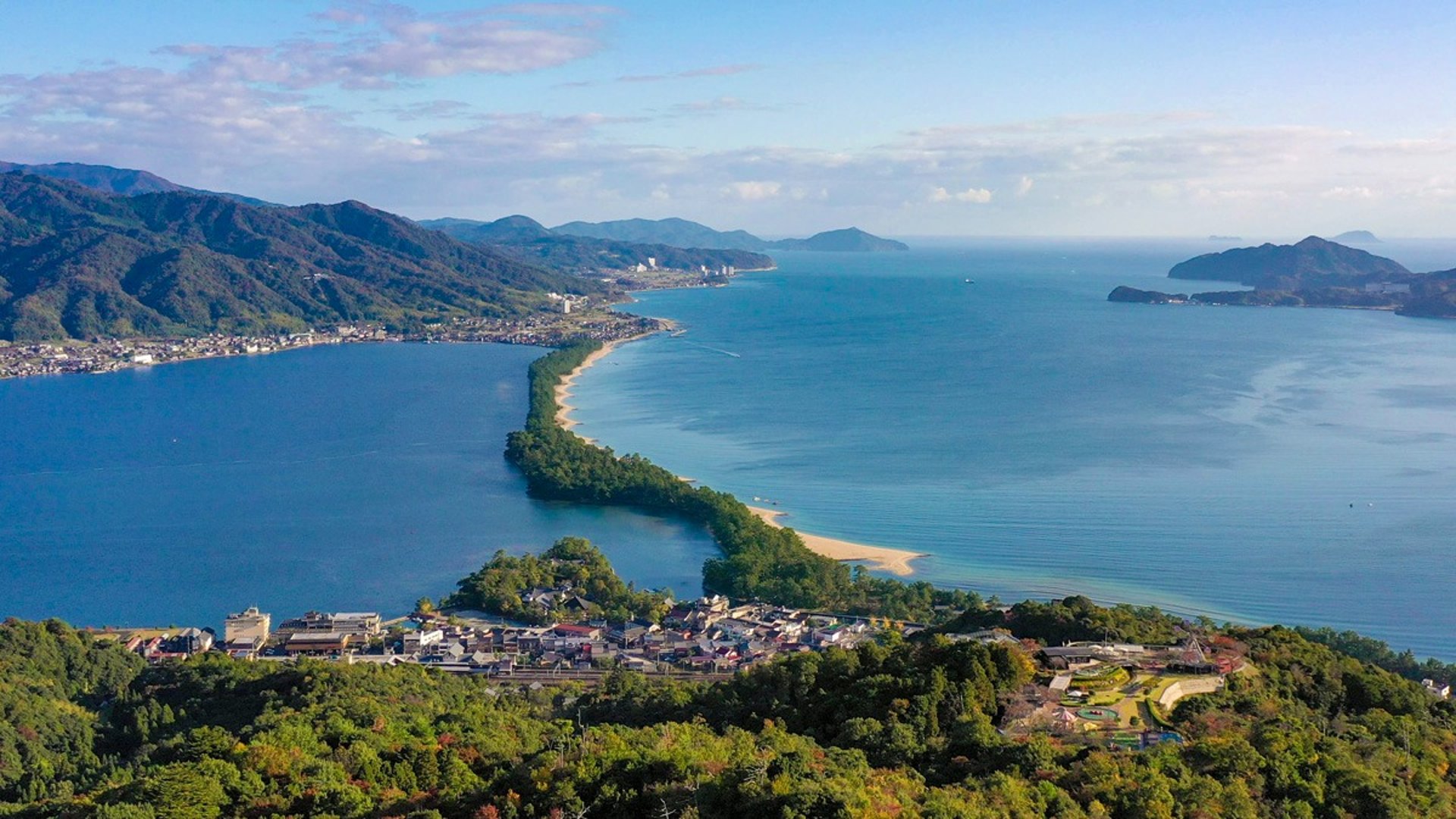
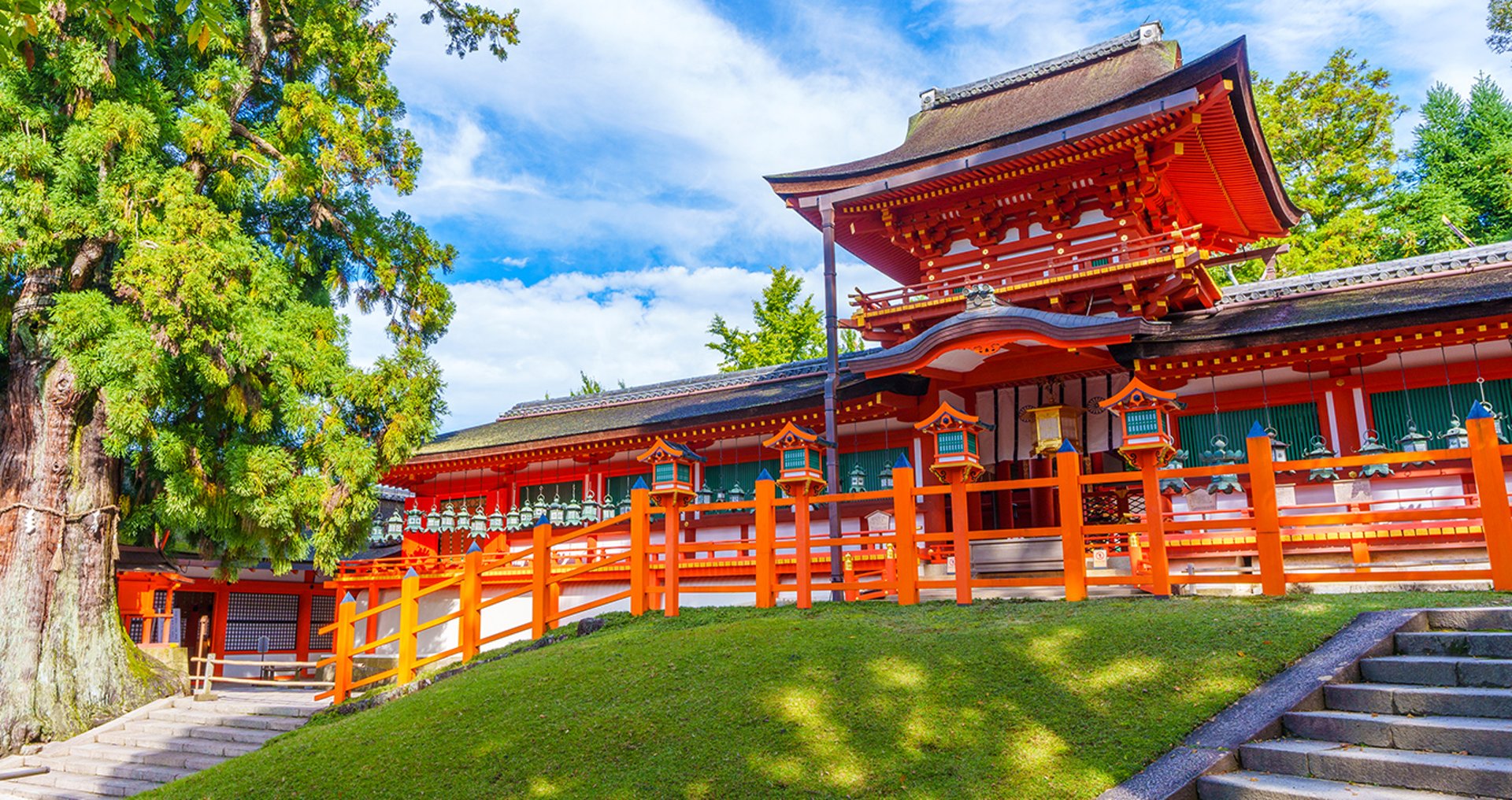
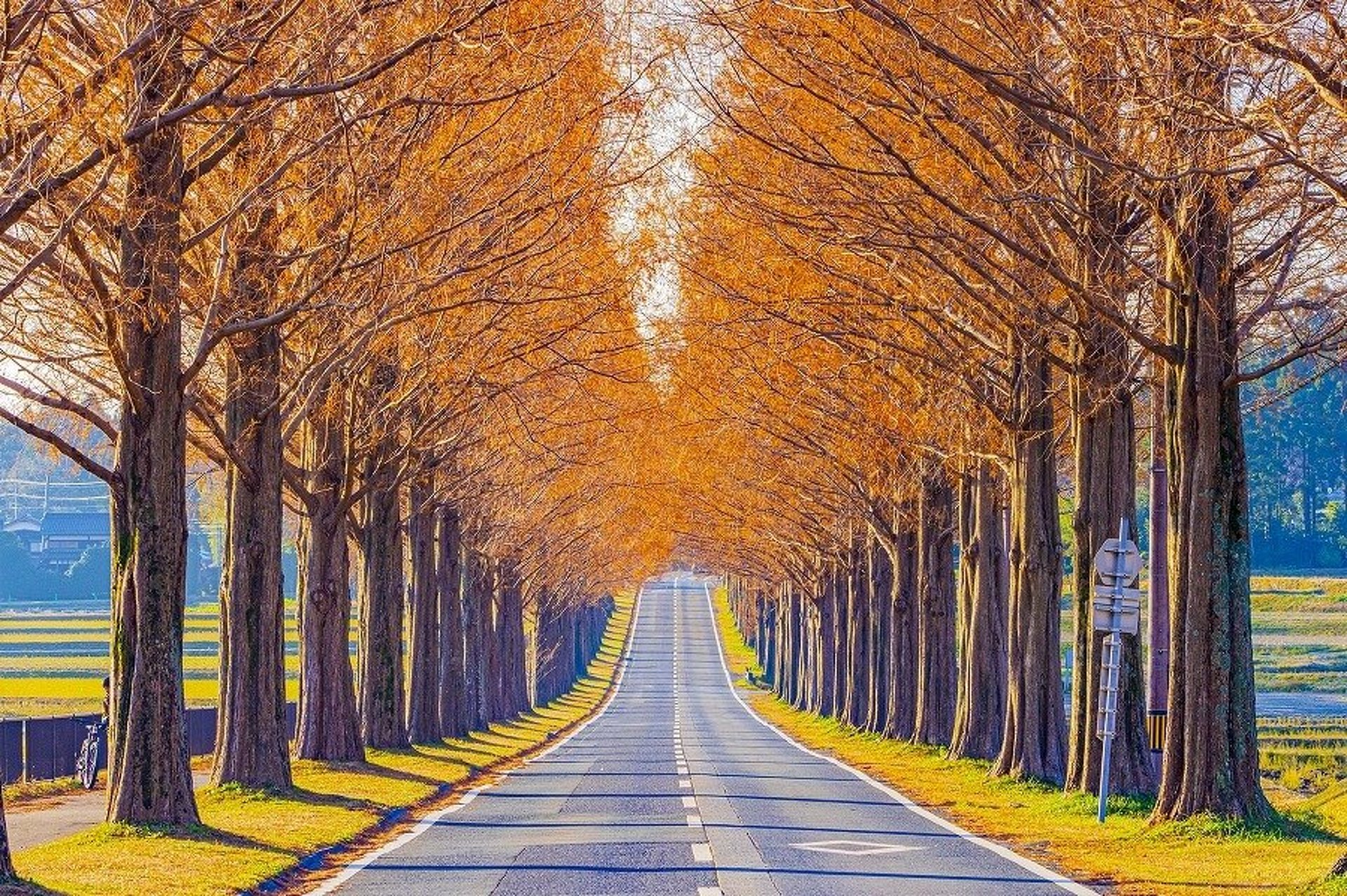
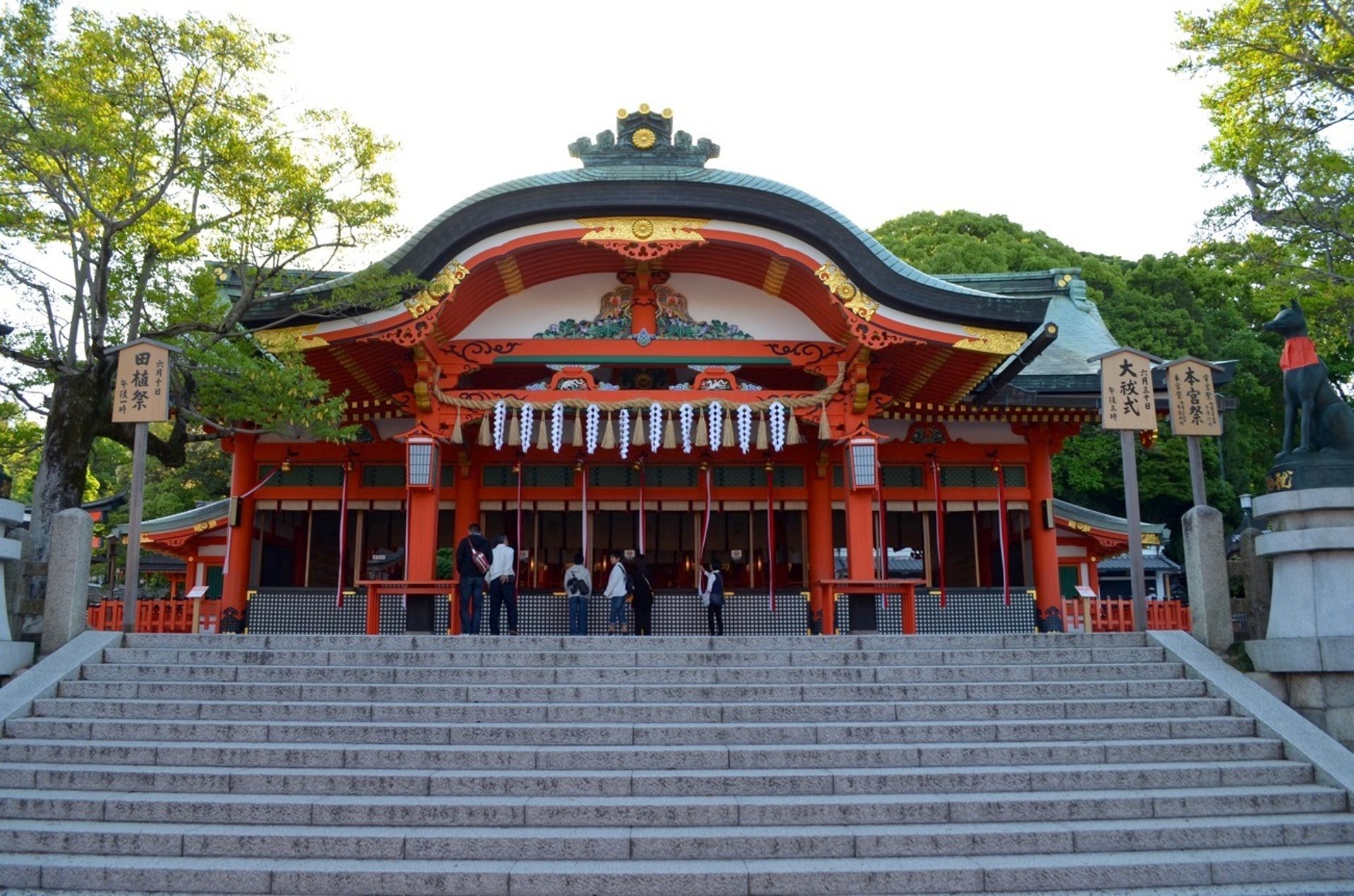
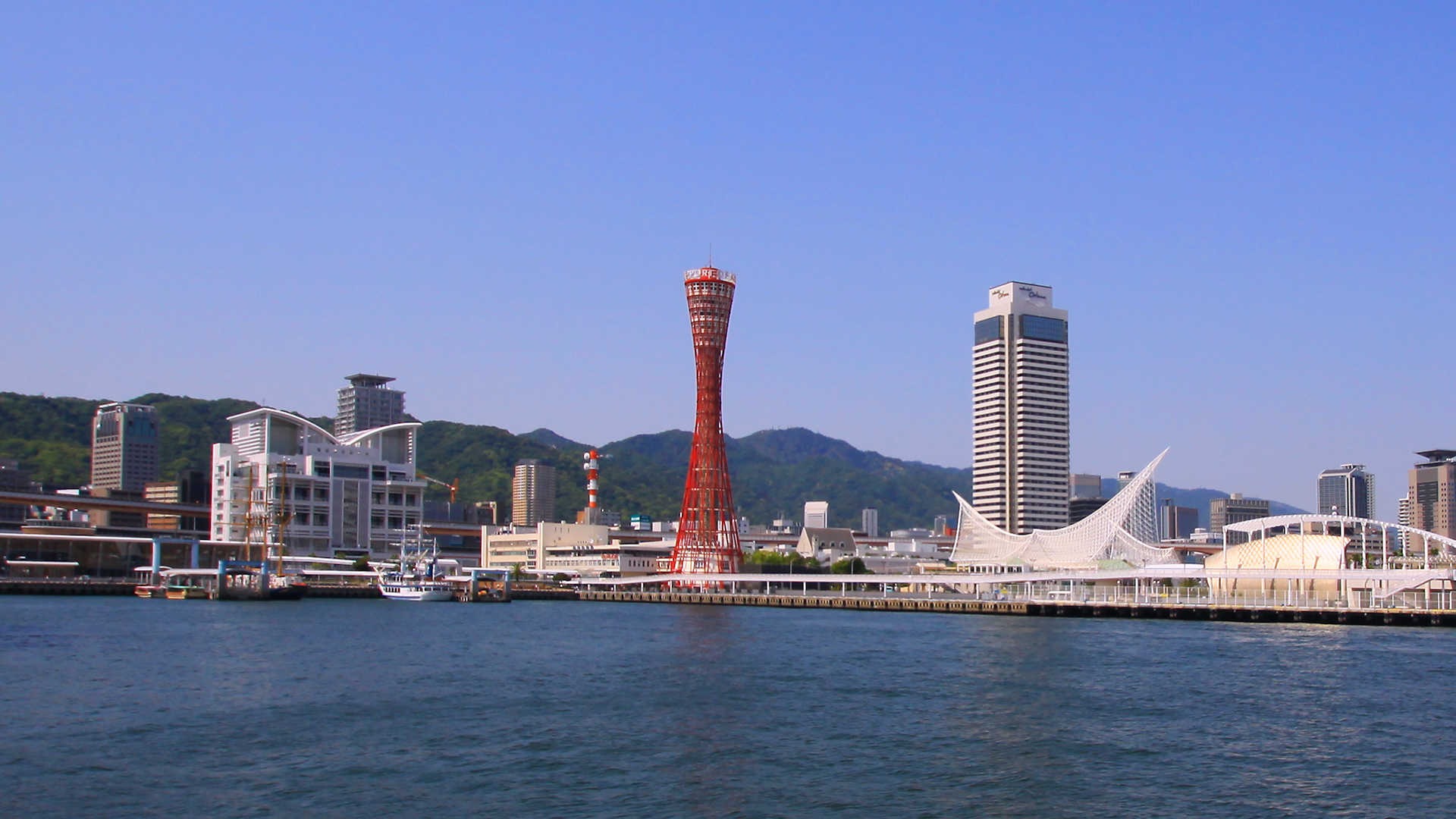
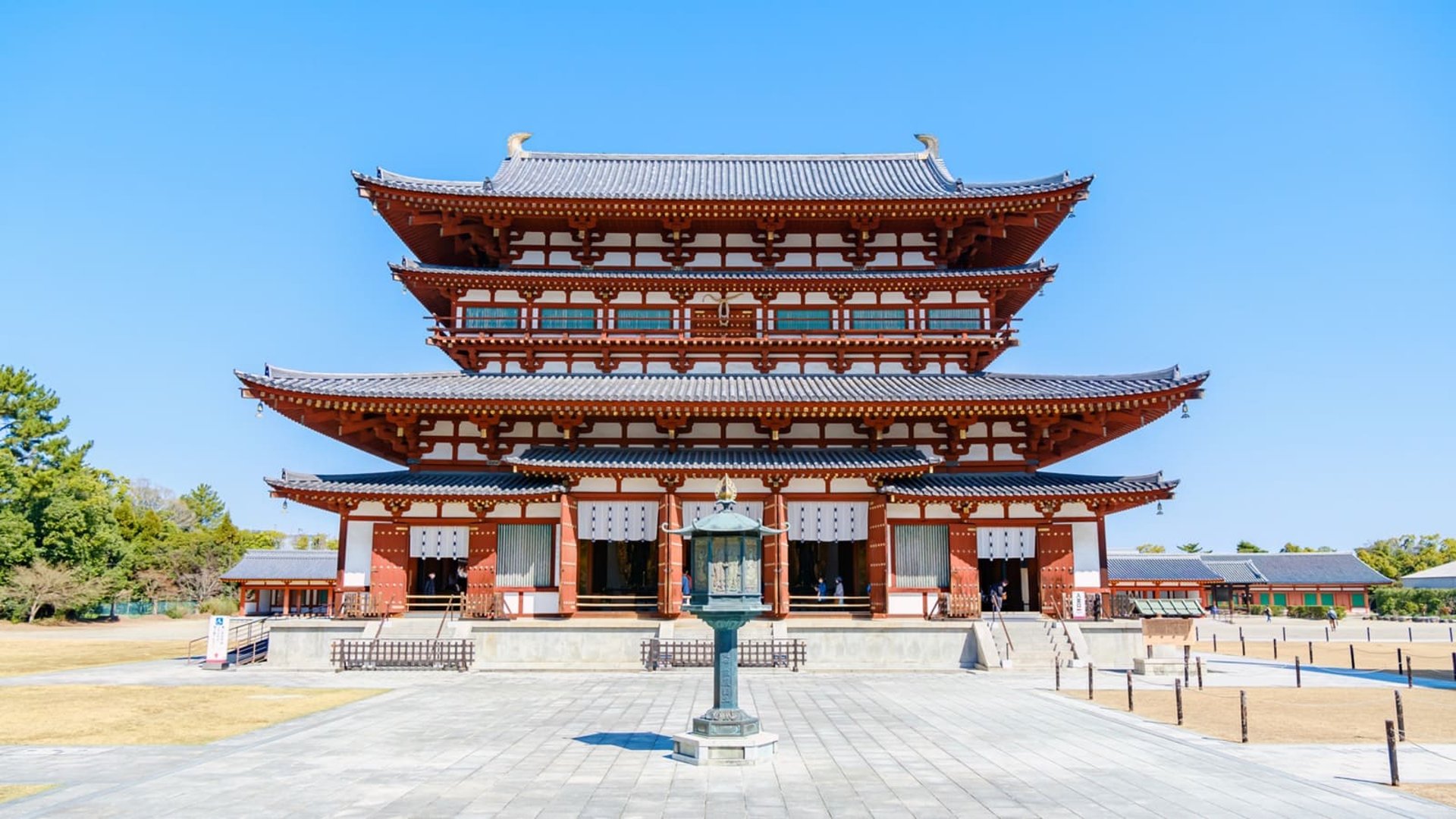
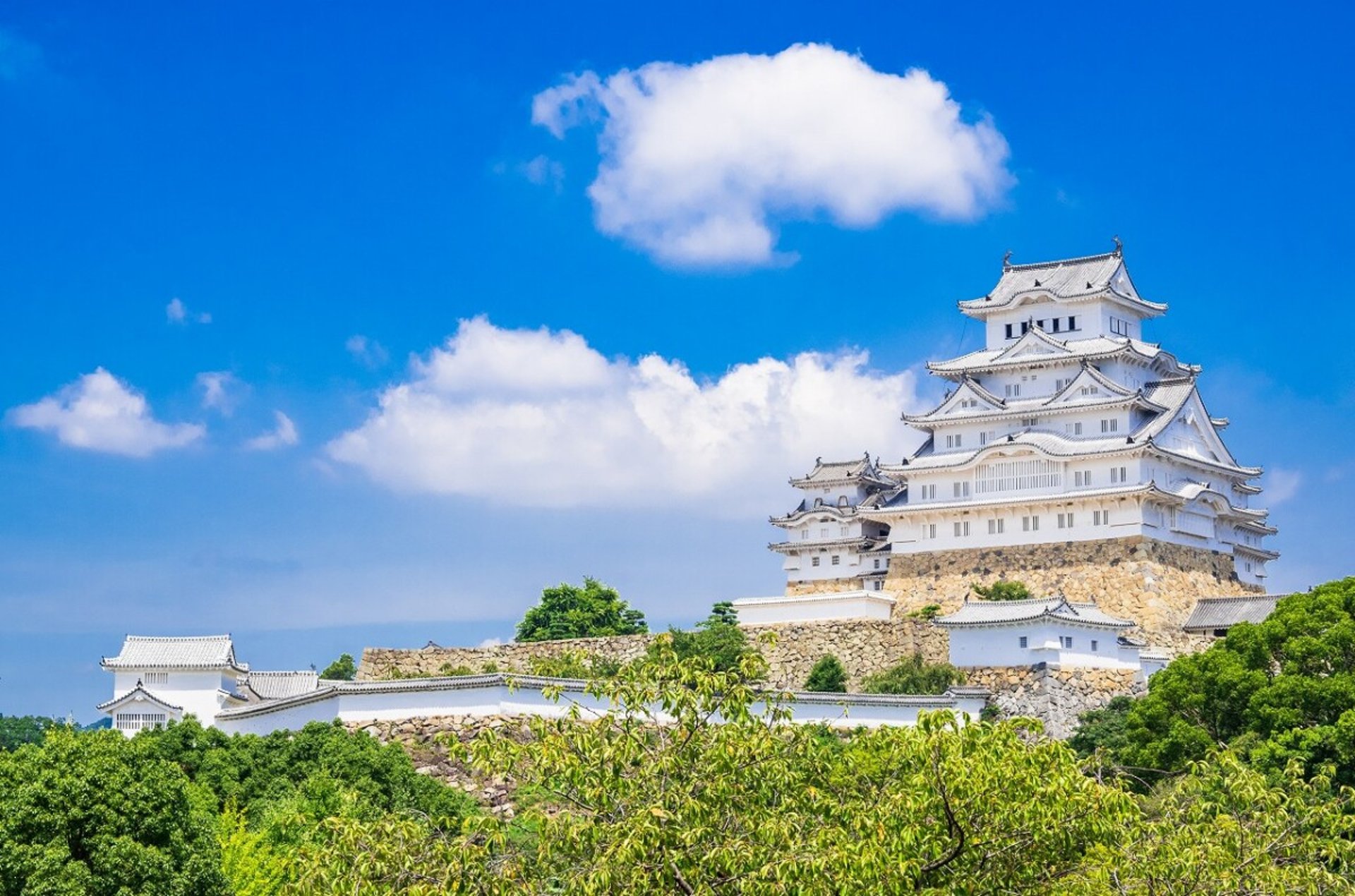
Kansai
Kansai is located in the western part of Japan and consists of Osaka, Kyoto, Hyogo, Nara, Shiga, and Wakayama prefectures. The area is rich in historical and cultural heritage, and is visited by many tourists from Japan and abroad. It is also a place that has prospered as the political and cultural center of Japan since ancient times. Here are some of the attractions of the sightseeing spots.
Kansai's Seasonal Attractions
The Kansai region is an area where visitors can enjoy nature and traditional culture in each of the four seasons. Each season is characterized by different landscapes, events, and food culture, and depending on which season you visit, you can experience a completely different attraction. Below are the charms of Kansai in each of the four seasons: spring, summer, fall, and winter.
Spring (March to May)
Spring in Kansai is especially attractive for its famous cherry blossom (sakura) spots. When the cherry blossoms are in full bloom, many tourists visit and enjoy the fantastic scenery.
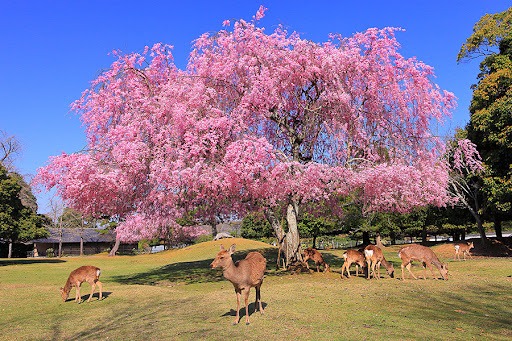

Attractions and Activities
・Tours of famous cherry blossom spots
Kyoto: Arashiyama
Arashiyama's cherry blossom trees and bamboo forests herald the arrival of spring. We also recommend taking a trolley train to view the cherry blossoms.
Osaka Castle Park
Approximately 3,000 cherry trees bloom around Osaka Castle, and the illuminated cherry blossoms at night are also spectacular.
Nara Park
Enjoy the unique scenery created by the cherry blossoms and wild deer. The grounds of Todaiji Temple and Kofukuji Temple are also famous cherry blossom spots.
Spring Events: Hinamatsuri
Especially in Kyoto and Nara, beautiful Hina dolls are displayed in historic townhouses and temples, allowing you to experience traditional Japanese culture.
Summer (June to August)
Summer in the Kansai region offers an energetic atmosphere with its many festivals and fireworks displays. Cold sweets are also popular to get through the hot summer.
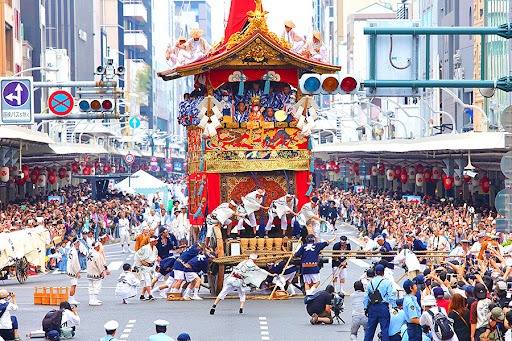

Attractions and Activities
Gion Festival (Kyoto)
This is one of the three major festivals in Japan, and is a grand festival held in July. Gorgeous floats parade through the city, and you can enjoy the traditional atmosphere.
Tenjin Festival (Osaka)
This is also one of the three major festivals in Japan, and is held at the end of July. The highlights are the boat procession on the river and the fireworks display.
Mt. Rokko (Kobe)
This is a popular summer resort, and you can enjoy hiking and spectacular views in the cool climate.
Summer Food: Shaved Ice
In the Kansai region, authentic shaved ice made with matcha and brown sugar syrup is especially popular. Try it at a long-established cafe in Kyoto.
Autumn (September to November)
Autumn in the Kansai region is the season of autumn leaves (momiji), when the beautiful nature and traditional gardens are decorated with colorful foliage. It is also a great opportunity to enjoy the fall season's delicious food.
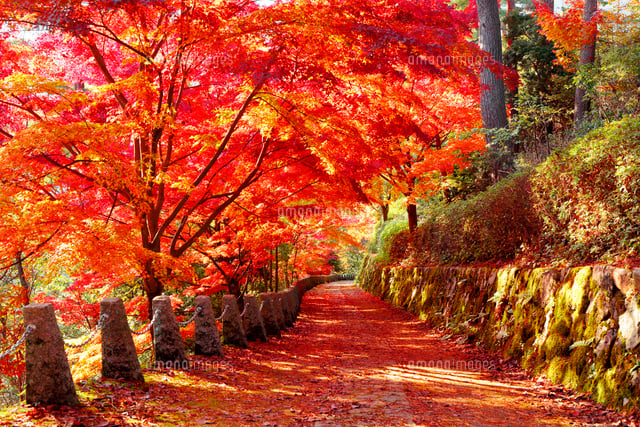

Attractions and Activities
Kyoto: Sagano and Tofukuji Temple
The view of autumn leaves from the Sagano Scenic Train and from Tofukuji Temple's Tsutenkyo Bridge is truly spectacular.
Nara: Mount Yoshino
Not only is it a place for cherry blossoms in spring, but also for autumn leaves. The entire mountain is dyed fiery red and yellow.
Lake Biwa area (Shiga)
The contrast between the autumn leaves and the lake is beautiful. The view from Mount Hiei is also recommended.
Autumn gourmet: Matsutake mushroom and chestnut dishes
Autumn is also the season to enjoy seasonal ingredients. Kyoto's high-end restaurants serve dishes using matsutake mushrooms and chestnuts.
Winter (December to February)
Winter in Kansai is relatively warm, but there are many places where you can enjoy snowy scenery and illuminations, and there is a special beauty in the quiet.
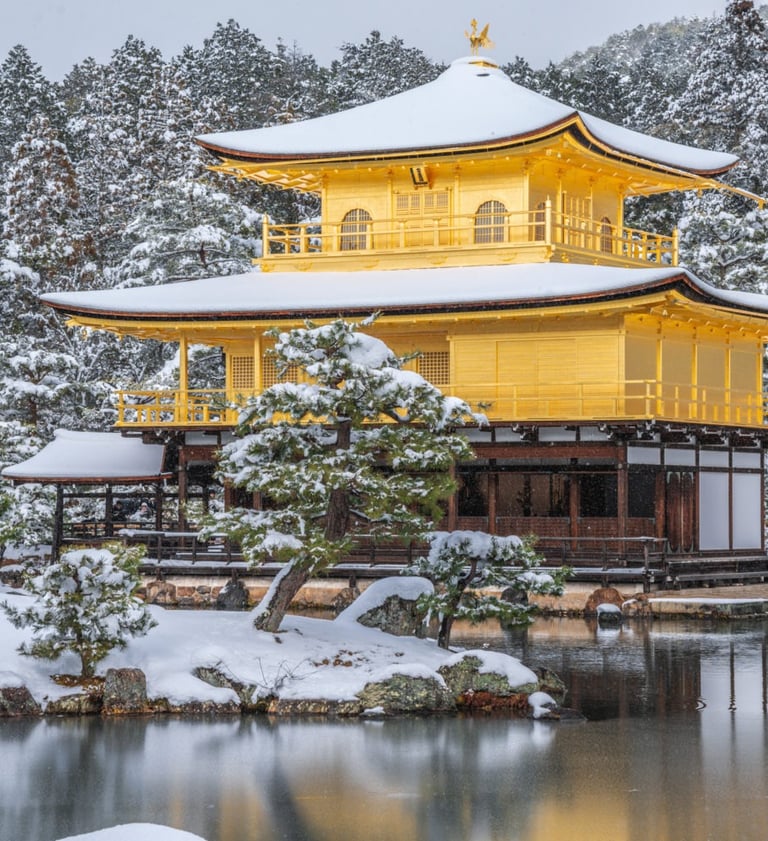

Attractions and Activities
Kinkakuji Temple (Kyoto)
Covered in winter snow, Kinkakuji Temple looks like something out of a fairy tale.
Illuminations on Mt. Rokko (Kobe)
The Kobe Luminarie and the night view of Mt. Rokko are popular winter date spots.
Kumano Kodo (Wakayama)
Walking along the silent old roads in the snowy scenery is a spiritually cleansing experience.
Winter delicacies: hot pot dishes and crab
Hot dishes such as Kyoto's yudofu and brand crab from Awaji Island, Wakayama, are perfect for the cold season.
Popular Attractions in Kansai
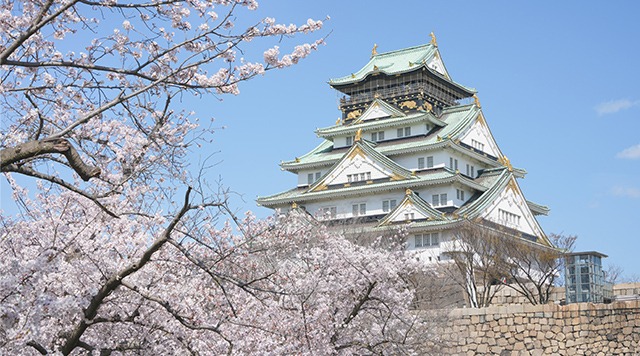

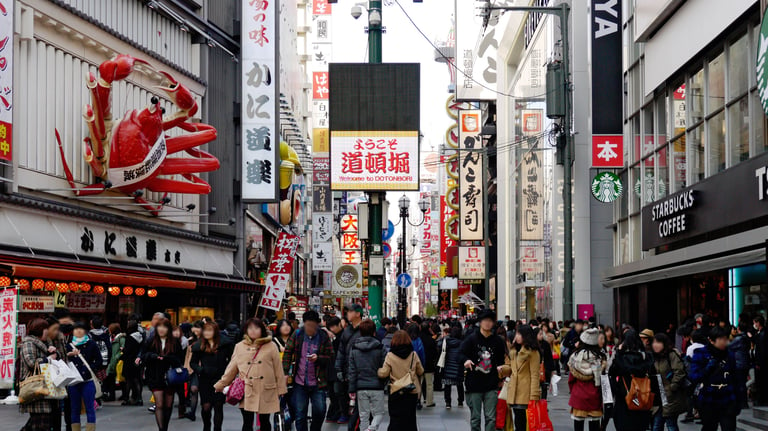

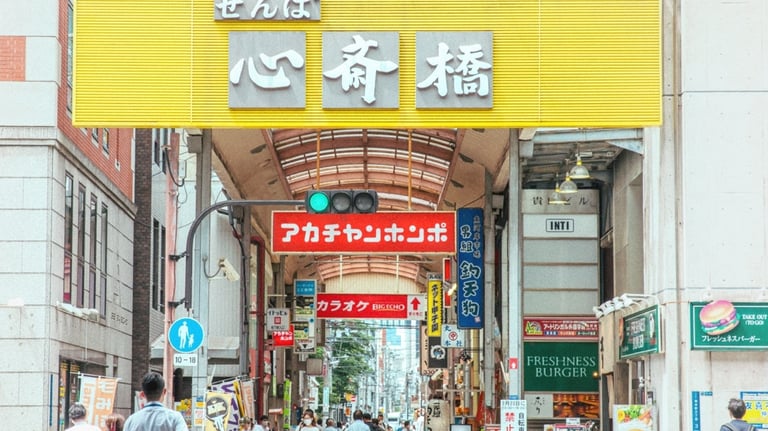

Osaka Prefecture
Osaka Prefecture is located in the Kinki region of Japan and is the central city of the Kansai region. It is also known as the "Kitchen of the World" and has a highly developed food culture. It is also famous as a city of commerce and entertainment, and is a place that attracts many tourists. Osaka City is the prefectural capital and the third largest city in Japan. It is attractive for its lively streets, historical buildings, and unique culture. Below, we will introduce some useful information for tourists visiting Osaka Prefecture.
Osaka Castle is an important structure symbolizing Japanese history and culture, and is located in the center of Osaka City. Built in 1583 by Toyotomi Hideyoshi, it flourished as the political, economic, and cultural center of Japan from the Sengoku period to the early Edo period. Today, it is one of Osaka's most famous tourist destinations, attracting many tourists from both within Japan and overseas.
Osaka Castle
Dotonbori
Dotonbori is a downtown area located in Chuo-ward, Osaka City, and is one of the most popular tourist destinations in Osaka. Known as a gourmet town, it is visited by many tourists from Japan and abroad as a place to enjoy gourmet food and entertainment. The streets lined with neon signs and billboards are also known as “Japan's Times Square” and are characterized by their energetic atmosphere.
Shinsaibashi
Shinsaibashi is a famous downtown area located in Chuo-ward, Osaka City, and is visited by many people from Japan and abroad as a tourist destination. It is especially known as an area for shopping and dining, and is the center of the Minami district, also known as "Osaka's kitchen. The name “Shinsaibashi” comes from “Shinsaibashi Bridge” built in the early Edo period. This bridge symbolized the culture of the townspeople of that time, and vestiges of this culture can still be seen today.
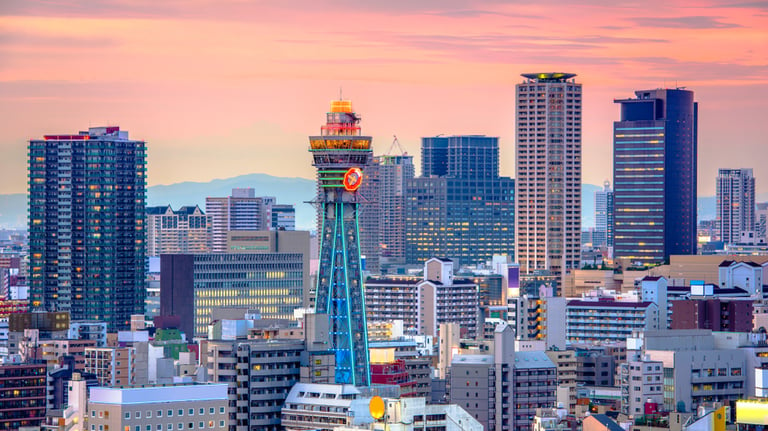

Tsutenkaku
Tsutenkaku is a symbolic tower located in Naniwa Ward, Osaka City, and is one of the leading tourist destinations in the Kansai region. Located in an area known as "Shinsekai," it has a unique charm that combines a retro atmosphere with modern entertainment. The view from the observation deck and the surrounding gourmet spots are particularly popular, attracting many tourists.
Universal Studios Japan
Universal Studios Japan is one of the largest theme parks in Japan, located in Konohana ward, Osaka City. It attracts many tourists from both Japan and overseas as a place where you can enjoy attractions and shows based on Hollywood movies, as well as world-class entertainment. It is a facility where families, couples, and friends can have fun all day long.
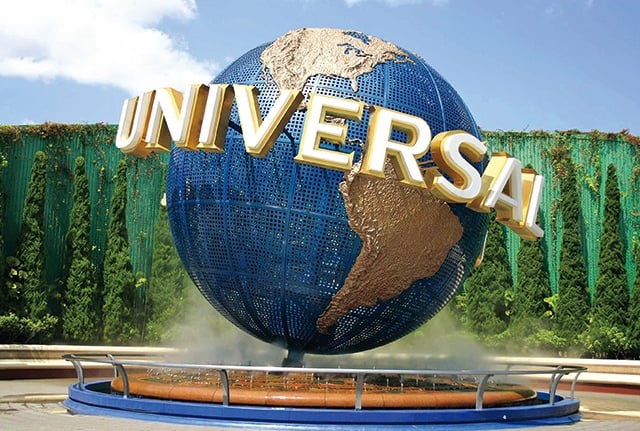

Shitennoji Temple is the oldest official temple in Japan, located in Tennoji Ward, Osaka City, and is said to have been founded by Prince Shotoku in 593. It is also said to be the birthplace of Japanese Buddhist culture, and is a place of great historical and cultural value. There are also many tourist attractions and shopping streets in the surrounding area, attracting many visitors.
Shitennoji Temple
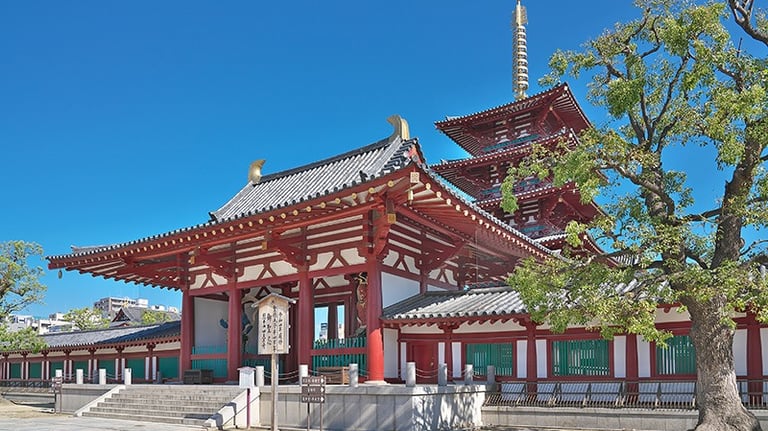

Kaiyukan( Osaka Aquarium)
Kaiyukan (located in Tempozan Marketplace in Osaka Port) is one of Japan's leading large aquariums, and is a popular spot visited by many tourists from both within Japan and overseas. It is particularly known for displaying some of the world's largest aquariums and a wide variety of marine life, and is characterized by its exhibits with a "Pacific Rim" theme.
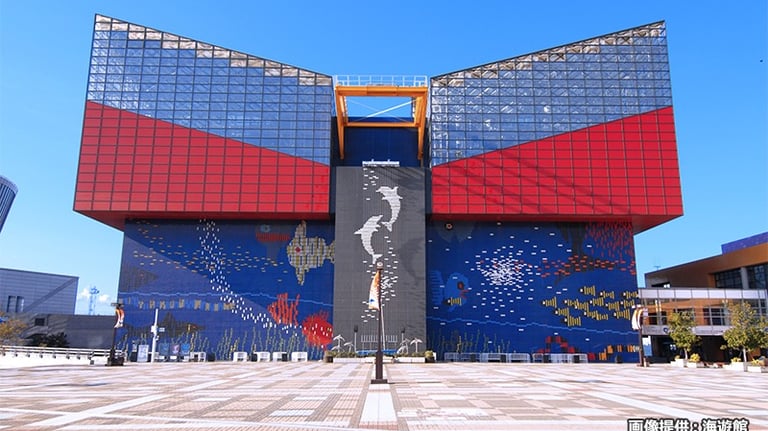

Minoo Park
Minoo Park is a park rich in nature located in Minoo City, Osaka Prefecture, and is known as one of the most famous autumn foliage spots in the Kansai region. It is part of the national park "Meiji no Mori Minoh Quasi-National Park" and is characterized by beautiful valleys and waterfalls. It is loved by locals and many tourists alike as a place to refresh in a quiet environment away from the hustle and bustle of the city.
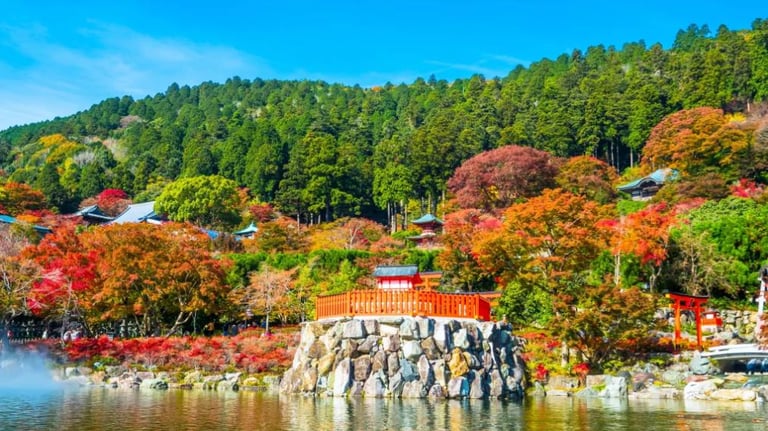

Sumiyoshi Taisha
Sumiyoshi Taisha is a historic shrine located in Sumiyoshi ward, Osaka City, and is the head shrine of the Sumiyoshi Shrines, of which there are approximately 2,000 throughout Japan. Since ancient times, it has been worshipped as the guardian deity of the sea and the deity of safe voyages, and is also known for granting blessings such as business prosperity, matchmaking, and protection from evil.
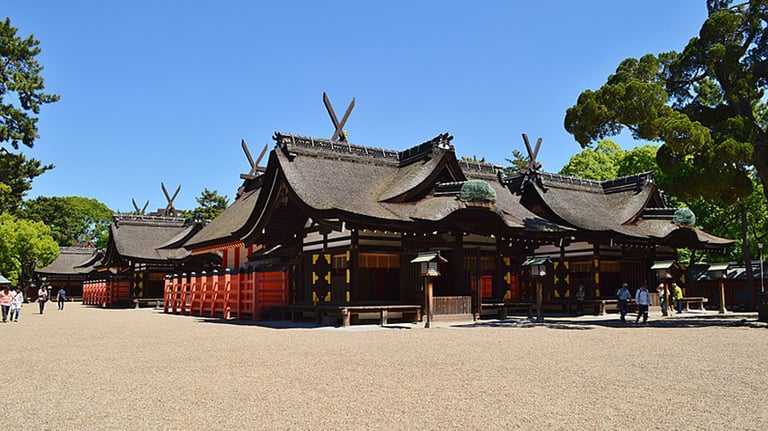

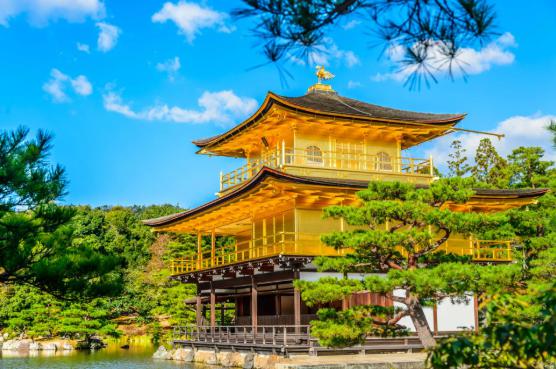

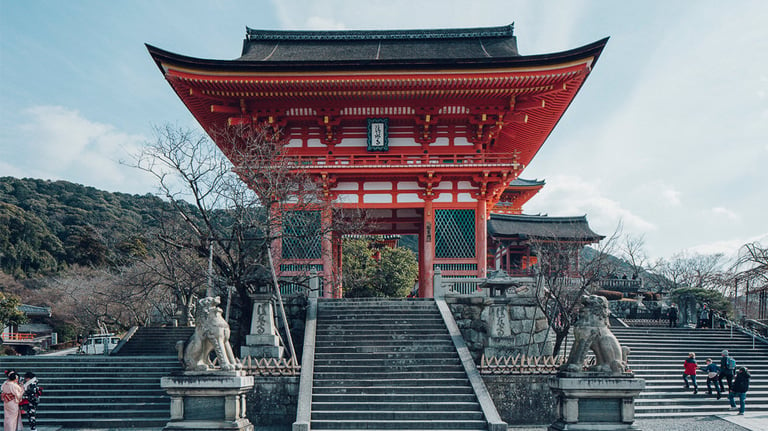

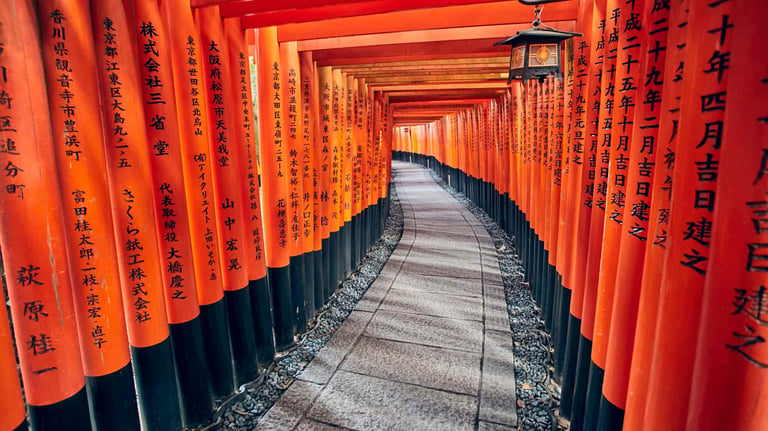

Kyoto Prefecture
Kyoto Prefecture is located in the Kinki region of Japan, and is an area where the history and culture of the ancient capital, Kyoto, lives on. It has flourished as the capital of Japan for over 1,200 years, and is also known as the "heart of Japan." Many traditional temples, shrines, and gardens remain, and many World Heritage Sites are scattered throughout the prefecture. It is also attractive for its seasonal scenery and unique food culture. Below, we introduce some useful information for tourists visiting Kyoto Prefecture.
Kinkakuji Temple (formally known as Rokuonji Temple) is a temple of the Shokokuji School of the Rinzai Sect, located in Kita ward, Kyoto. It features beautiful architecture covered in gold leaf and is a World Heritage site. The harmony between its shining form and the surrounding garden has earned it the nickname “the symbol of Kyoto,” and it is a popular spot for tourists from Japan and abroad.
Kinkaku Temple
Kiyomizu Temple
Kiyomizu temple is a historic temple located in Higashiyama ward, Kyoto city, and is one of Japan's leading tourist destinations. It is also registered as a World Heritage Site, and is a popular spot visited by many tourists from both within Japan and overseas. In particular, the main hall, which is surrounded by trees and has a magnificent stage-like structure, and the beautiful nature surrounding it are distinctive. It is also known as the "symbol of Kyoto."
Fushimi Inari Taisha
Fushimi Inari Taisha is the head shrine of about 30,000 Inari shrines throughout Japan, located in Fushimi-ku, Kyoto. Known for its blessings such as prosperous business, good harvest, and family safety, it is a popular spot visited by many tourists from Japan and abroad. In particular, the approach to the shrine is widely known for its symbolic “Senbon-torii,” a series of vermilion-lacquered torii gates.
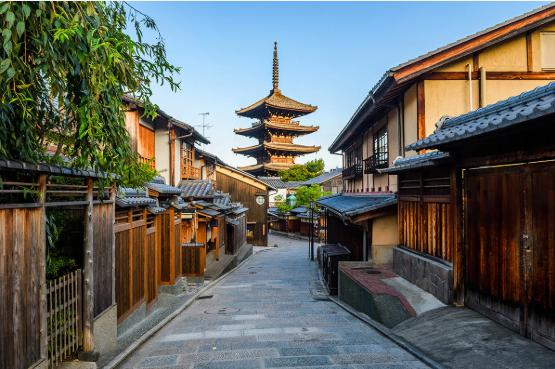

Gion
Gion is a historic area located in Higashiyama ward, Kyoto, and is one of the symbols of traditional Japanese culture. It is especially known as a “Hanamachi (flower street)” and is famous as a place where maiko (apprentice geisha) and geiko (geisha) are active. The old streets, teahouses, and traditional architecture of this area have become a popular destination for many tourists from Japan and abroad.
Arashiyama
Arashiyama is a nature-rich sightseeing area located on the west side of Kyoto City, and is one of Kyoto's representative scenic spots. The bamboo groves, Togetsukyo Bridge, and beautiful seasonal scenery make it a popular spot for tourists from Japan and abroad. Known as a place loved by aristocrats and literary figures since ancient times, this area offers a sense of traditional Japanese beauty.
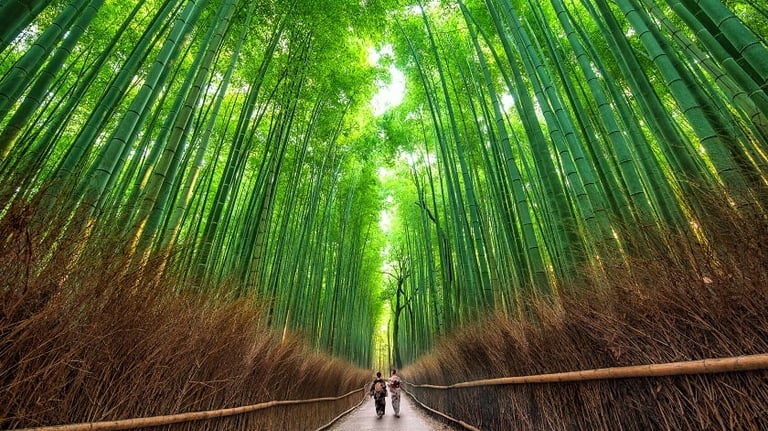

Nijo Castle is a historic castle located in Nakagyo Ward, Kyoto City, and is registered as a national treasure of Japan and a UNESCO World Heritage Site. Its Edo period architecture and gardens have been beautifully preserved, and it is a symbolic structure of the Azuchi-Momoyama culture built by Tokugawa Ieyasu. It is also known as the place where the Meiji Restoration took place in 1867, and played an important role in Japanese history.
Nijo Castle
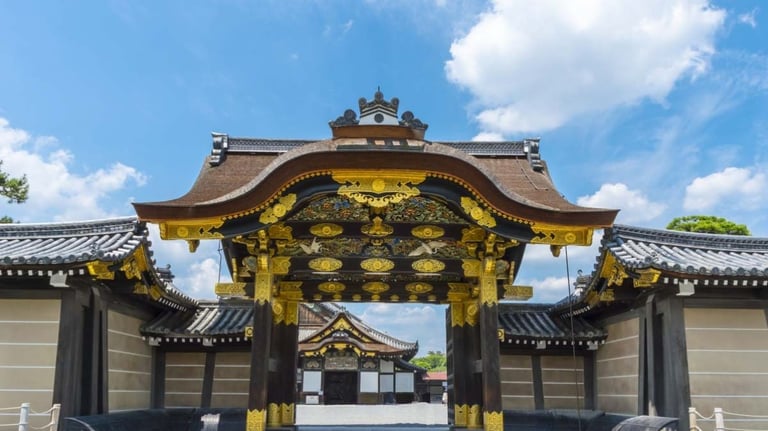

Byodoin Temple
Byodoin Temple is a historic temple located in Uji, Kyoto Prefecture, and is registered as a UNESCO World Heritage Site. Founded in 1052 during the Heian period, it is one of Japan's leading Buddhist cultural assets. It is particularly famous for its beautiful building called the "Phoenix Hall," which is depicted on Japan's 10 yen coin and old 10,000 yen notes. The temple also boasts magnificent gardens and Buddhist statues, making it a popular spot for tourists from both within Japan and overseas.
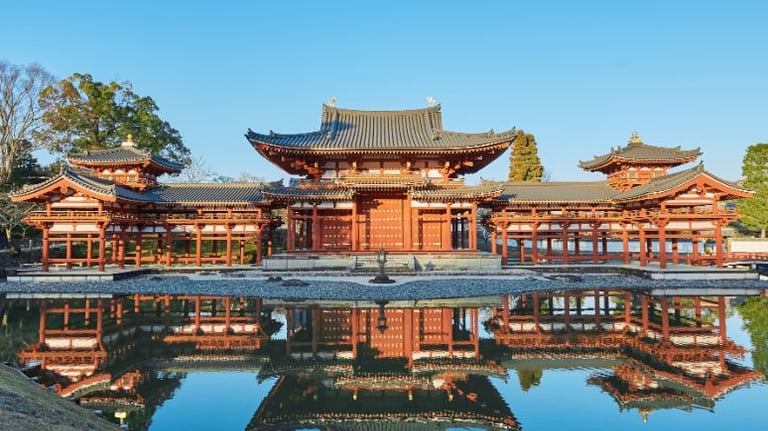

Ginkakuji Temple
Ginkakuji Temple (official name: Jisho-ji) is a Rinzai sect temple of the Shokoku-ji school located in Sakyo Ward, Kyoto City, and is one of Kyoto's most famous tourist destinations. Built in the late Muromachi period, it is a structure symbolizing "Higashiyama Culture" and is also registered as a UNESCO World Heritage Site. It is characterized by its gardens and architecture that exude the aesthetics of "wabi-sabi," and is a place that attracts many tourists from both Japan and abroad.
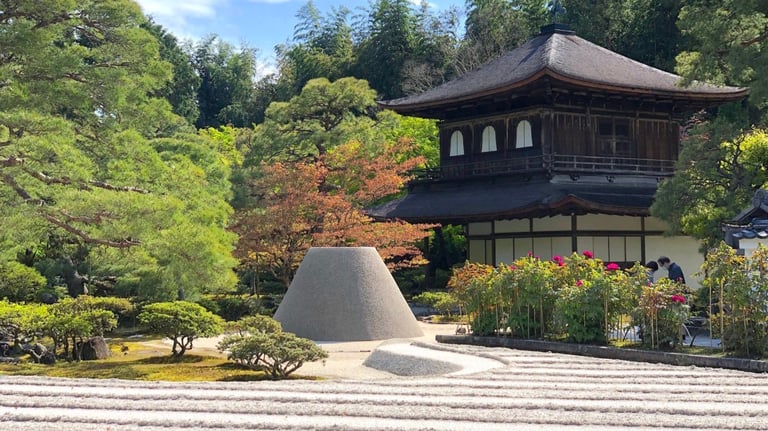

Tofukuji Temple
Tofukuji Temple is the head temple of the Tofukuji sect of the Rinzai sect of Buddhism, located in Higashiyama Ward, Kyoto City, and is one of Kyoto's most representative Zen temples. Founded in 1236, it is known as one of the oldest Zen temples in Japan. Many tourists visit the temple, especially during the autumn foliage season, and the spectacular views from Tsutenkyo Bridge and Gaunkyo Bridge are popular. The temple's vast gardens and historical buildings are also attractive, and it has received high praise both from within Japan and overseas.
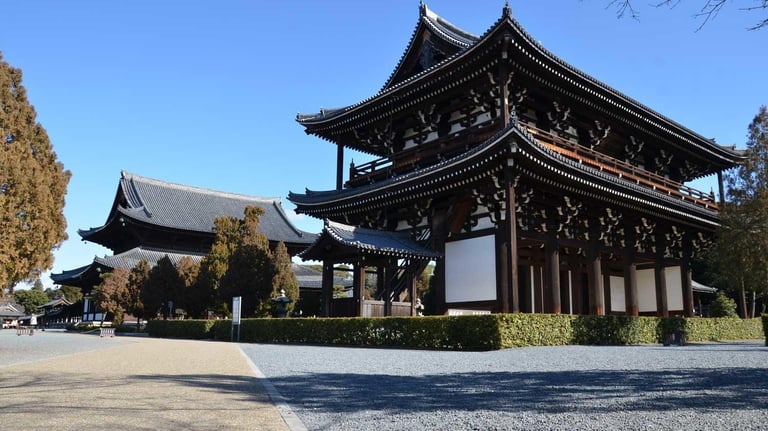

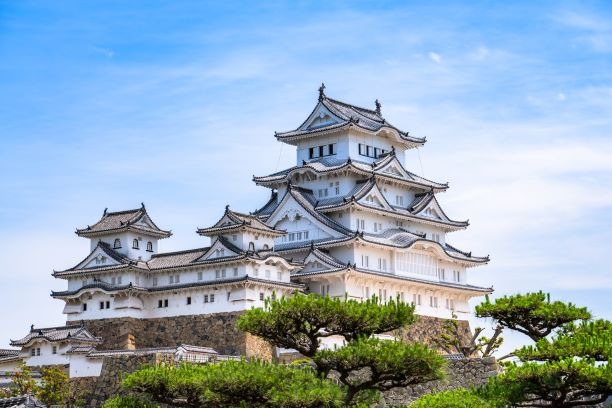

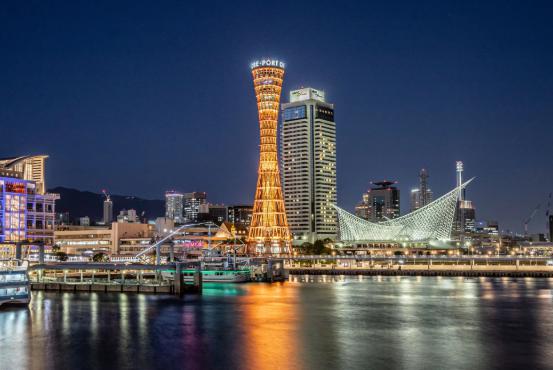

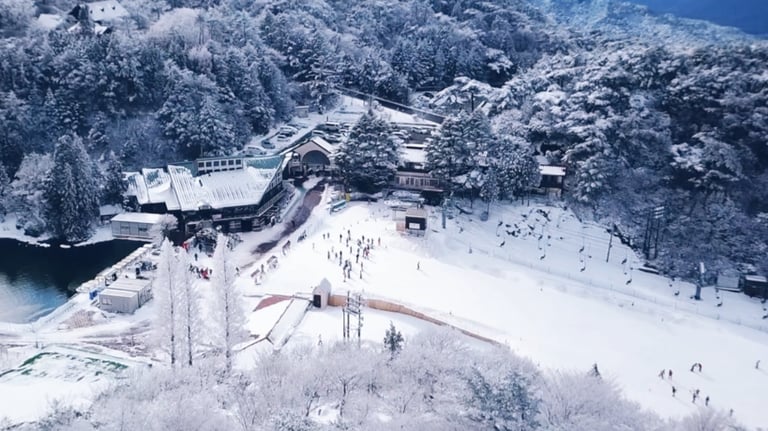

Hyogo Prefecture
Hyogo Prefecture is located in the Kinki region of Japan, and is an area with diverse charms. With mountainous areas to the north and the Seto Inland Sea to the south, urban areas and nature are in perfect harmony. Developed around the port city of Kobe, the prefecture is characterized by its exotic cityscapes and rich food culture. There are also many historical castles and hot spring resorts. Below, we introduce some useful information for tourists visiting Hyogo Prefecture.
Himeji Castle, located in Himeji City, Hyogo Prefecture, is a representative historical structure of Japan and is known as one of the "Three Great Castles of Japan." Also known as "Hakurojo" (White Heron Castle) due to its beautiful white plaster exterior, it is a popular spot visited by many tourists from both within Japan and overseas. It is also a castle with historical value, having been registered as Japan's first UNESCO World Heritage Site (cultural heritage) in 1993.
Himeji Castle
Kobe Port Tower
Kobe Port Tower was completed in 1963, and at the time was the first tower in Japan to adopt a "pipe structure. It is approximately 108 meters high and has become a symbol of the Port of Kobe. It is a popular observation point from which to view the entire Kobe Port. With its unique design and nighttime illumination, this beautiful structure is also known as the "Queen of Steel Towers. It is also an essential sightseeing spot in Kobe.
Mount Rokko Snow Park
Rokkosan Snow Park is a winter activity spot located in the Rokkosan area of Kobe City, Hyogo Prefecture, and is one of the representative ski resorts in the Kansai region. It is popular among families and beginners because it is located close to urban areas and offers easy access to winter sports. It is also unique in that it is open for night skiing and has artificial snow facilities, so it can be used stably even in years when there is little snowfall.
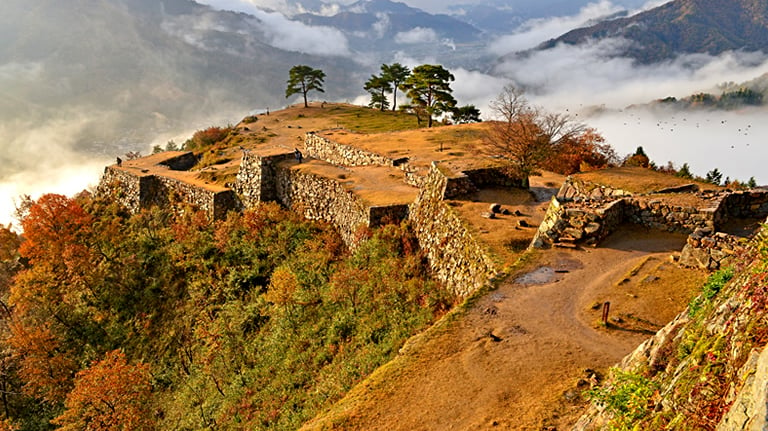

Takeda Castle Ruins
Takeda Castle Ruins is a mountain castle ruins located in Asago City, Hyogo Prefecture, and is a representative tourist attraction in Japan, popularly known as "Castle in the Sky. The sight of the castle floating in a sea of clouds is fantastic and attracts many tourists, especially early in the morning in autumn. It is designated as a national historic site and is one of the 100 best castles in Japan. In 2006, it was named “Japan's Machu Picchu,” attracting attention from both inside and outside Japan.
Akashi Kaikyo Bridge
The Akashi Kaikyo Bridge took about 10 years to complete and is the longest suspension bridge in the world, connecting Kobe City in Hyogo Prefecture and Awaji Island, and is a symbolic structure that brings together the best of Japanese civil engineering technology. With an overwhelming scale of about 3,911 meters in length and beautiful design, it is known as the "world's best suspension bridge" and is a popular spot visited by many tourists from both Japan and abroad.
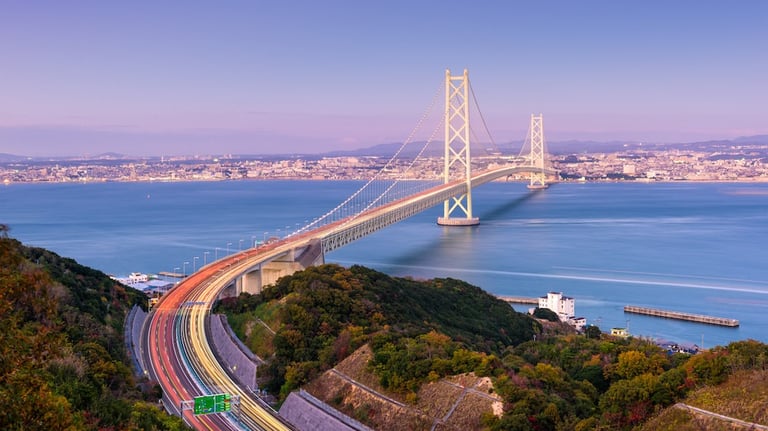

Genbudo Park is a nature-rich park located in Toyooka City, Hyogo Prefecture, and is built around Genbudo, which is designated as a national natural monument. The hexagonal columnar joints formed by volcanic activity approximately 1.6 million years ago are a distinctive feature of the park, and its beauty and grandeur make it a popular spot for many tourists. The surrounding area also offers beautiful natural scenery and walking trails for visitors to enjoy.
Genbudo Park
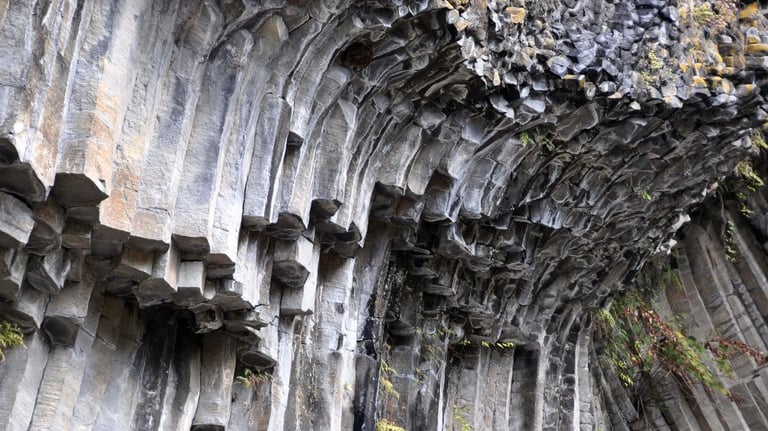

Nankinmachi
Nankinmachi is a Chinatown located in Chuo Ward, Kobe City, Hyogo Prefecture, and is known as one of the three largest Chinatowns in Japan. Along with Yokohama's Chinatown and Nagasaki's Shinchi Chinatown, it is a popular spot visited by many tourists. Nankinmachi is full of authentic Chinese restaurants, general stores, and seasonal events, so you can enjoy gourmet food and culture.
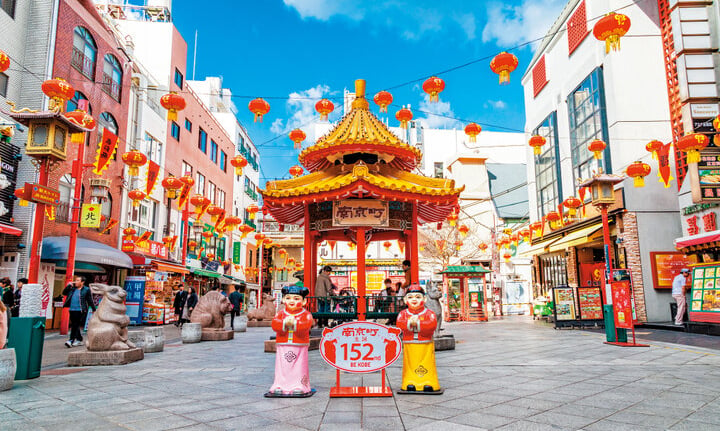

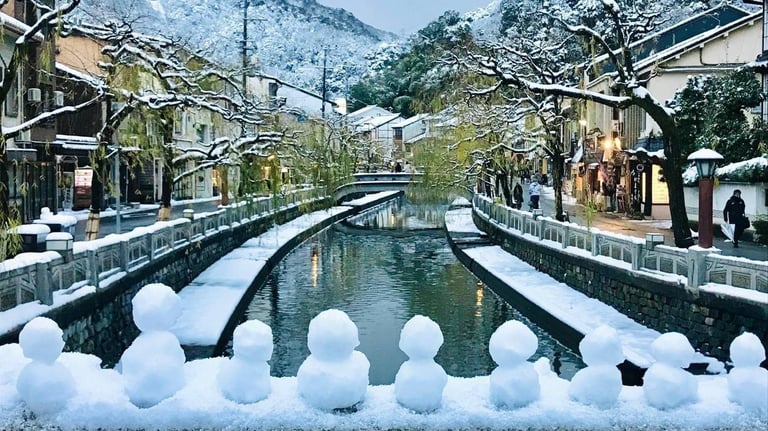

Kinosaki Onsen, located in Toyooka City, Hyogo Prefecture, is one of Japan's leading hot spring resorts and is known as a tourist destination where visitors can enjoy "out-spa tour. With a history of approximately 1,400 years, this hot spring resort town has been called “Japan's original landscape,” with its beautiful scenery and rich natural surroundings providing a healing environment. The nostalgic atmosphere of the hot spring resort is also a popular destination for many tourists from Japan and abroad.
Kinosaki Onsen
Izushi
Izushi is an area with a historic townscape in Toyooka City, Hyogo Prefecture, and is a beautiful tourist destination also known as the "Little Kyoto of Tajima." It flourished as a castle town during the Edo period, and even today, the old townhouses and cobblestone streets still retain a strong sense of the atmosphere of that time, making it an attractive spot. It is also popular as a place where you can enjoy gourmet food and traditional culture, including the local specialty "Izushi Soba."
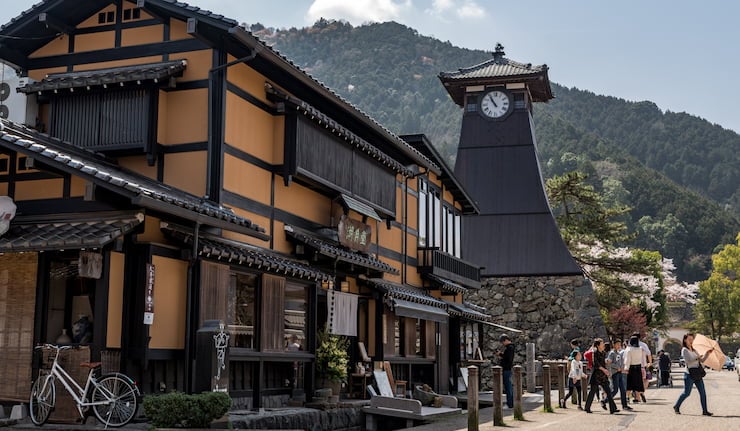

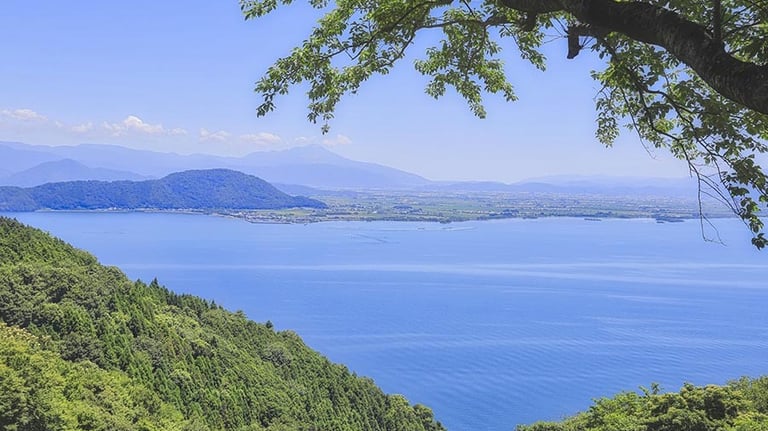

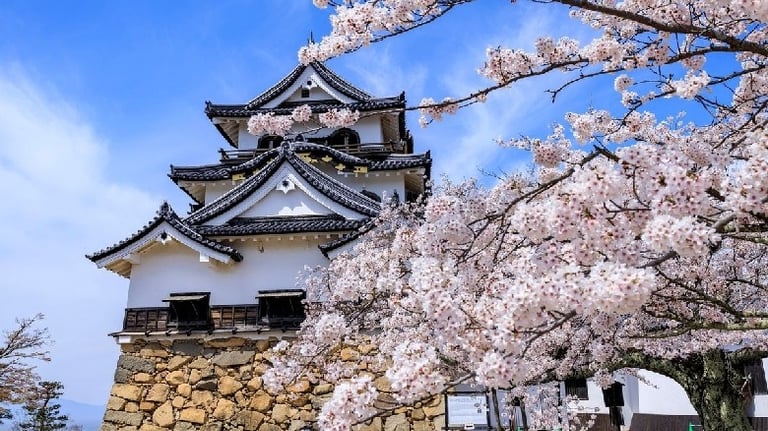


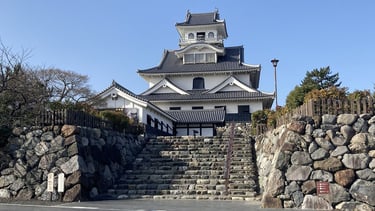
Shiga Prefecture
Shiga Prefecture is located in the Kinki region of Japan and is known as the "Land of Lakes." It has developed around Lake Biwa, Japan's largest freshwater lake, and is a place where rich nature and historical culture coexist in harmony. It has also flourished as a key transportation hub close to Kyoto and Nara since ancient times, and is dotted with many castles, shrines and temples. Below is some useful information for tourists visiting Shiga Prefecture.
Biwa Lake, located in Shiga Prefecture, is the largest lake in Japan and the only one designated as an “internationally important wetland” in Japan. Its vast waters and rich natural environment have supported people's lives and culture since ancient times. Also known as “Japan's water reservoir,” it plays an important role as a water source that nurtures many rivers and groundwater. The area around Biwa Lake is dotted with tourist attractions and historical spots, and is a popular area visited by many tourists from Japan and abroad.
Biwa Lake
Hikone Castle
Hikone Castle was built in the early Edo period by Ii Naotaka, the second son of Ii Naomasa. It took about 20 years to build the castle, and after its completion, it flourished as the center of the Hikone domain. Located in Hikone City, Shiga Prefecture, the castle is one of Japan's representative historical structures with its keep designated as a national treasure. It is one of the 12 existing castle towers, and is valuable for its almost complete preservation of the castle as it was when it was built in the early Edo period. In addition, there are beautiful gardens and a museum in the surrounding area, making it a popular spot visited by many tourists from Japan and abroad.
Nagahama Castle History Museum
Nagahama Castle History Museum is a historical theme park-type museum located in Nagahama City, Shiga Prefecture, and is of great historical value as a place associated with Hideyoshi Toyotomi. It is a special place where visitors can learn about Nagahama's history in depth through a reproduction of the castle keep and a variety of exhibits. Built on the site of the former Nagahama Castle, which is known as the place associated with Hideyoshi Toyotomi, this facility opened in 1983 and is a sightseeing spot that not only introduces the history and culture of Nagahama, but also offers a view of Biwa Lake from the recreated castle tower.
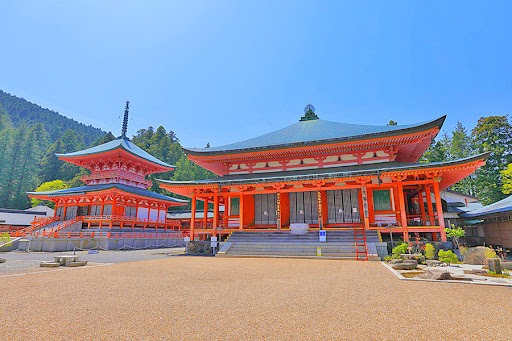

Enryakuji Temple
Enryakuji Temple is the head temple of the Tendai sect of Buddhism in Otsu, Shiga Prefecture, and is a magnificent group of temples spread across Mount Hiei. It is known as one of the birthplaces of Japanese Buddhism and is also called the "spiritual homeland of Japan." In 1994, it was registered as a UNESCO World Heritage Site as part of the "Cultural Monuments of Ancient Kyoto." It is also the place where many monks and ascetics undergo rigorous training, and its historical and religious value is extremely high.
Metasequoia Namiki
Metasequoia Namiki is a beautiful tree-lined road in Takashima City, Shiga Prefecture, with approximately 500 metasequoia trees (also known as metasequoias) lined along a total length of approximately 2.4 kilometers. This tree-lined road, where you can enjoy the scenery of the four seasons, has been selected as one of the "100 Best Roads in Japan" and is a popular spot visited by many tourists from Japan and abroad. In particular, in autumn, the metasequoia trees are beautifully colored golden, making it the perfect place for photography and driving.
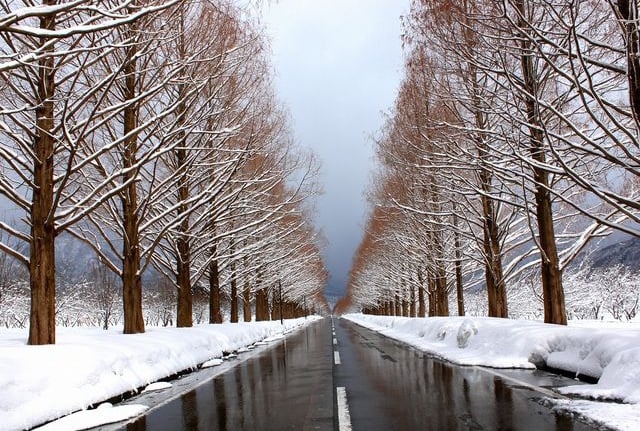

La Collina Omihachiman is a complex operated by the Taneya Group in Omihachiman City, Shiga Prefecture, which opened in 2015. It is a tourist spot that combines beautiful scenery in harmony with nature with local traditional culture. The vast grounds are dotted with Japanese and Western confectionery factories, cafes, shops, gardens, and more, and it is gaining popularity as a space that provides healing and inspiration to visitors. It is also known as the "new symbol of Shiga Prefecture."
La Collina Omihachiman
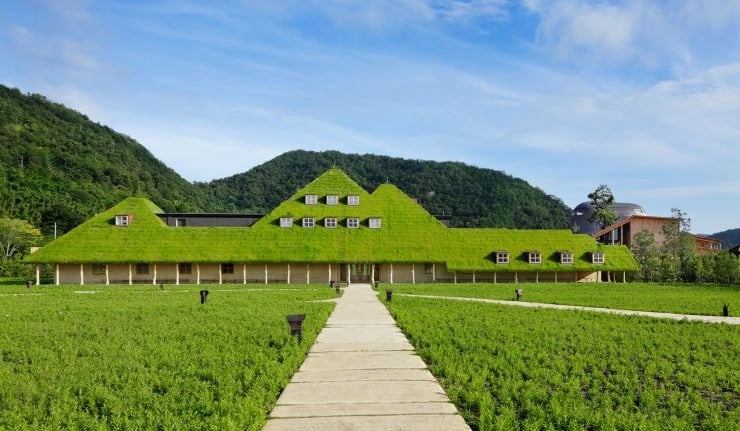

Shirahige Shrine
Shirahige Shrine is an ancient shrine located in Takashima City, Shiga Prefecture. It is a beautiful shrine also known as the "Itsukushima of Omi."Its symbol is the vermilion-lacquered Otorii (Grand Gate) floating on Biwa Lake , and its scenery attracts many tourists from Japan and abroad. It is also regarded as the head shrine of “Shirahage shrines” throughout Japan, and is believed to be beneficial for longevity, matchmaking, and good fortune since ancient times.
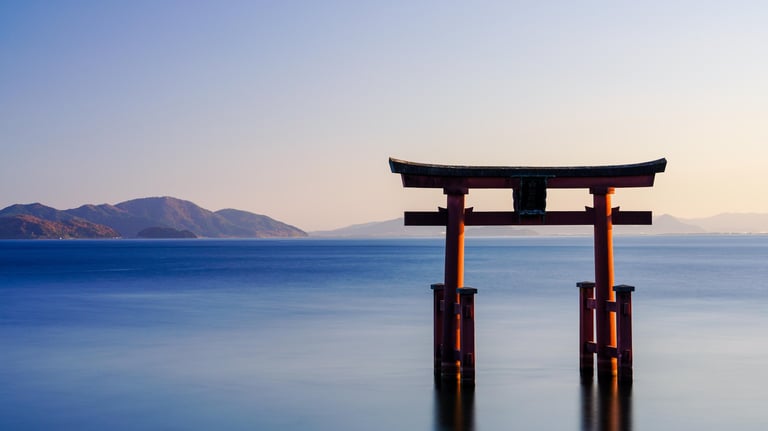

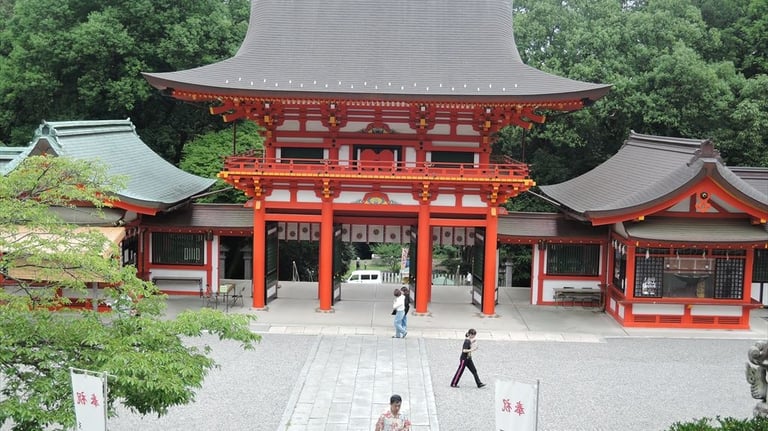

Omi Jingu (Omi Shrine) is located in Otsu City, Shiga Prefecture, and is an important religious site symbolizing the history and culture of Japan. The shrine is dedicated to Emperor Tenchi, the 38th Emperor of Japan, and is also known for its adjoining "Emperor Tenchi's mausoleum (misasagi). The shrine has long been revered as the “First Shrine of Omi Province” and is a tourist attraction that attracts many worshippers.
Omi Shrine
Taga Taisha Shrine
Taga Taisha is an ancient shrine located in Taga Town, Inukami District, Shiga Prefecture, and is affectionately known as "Otaga-san." Known as the head shrine for "longevity " throughout Japan, it is a prestigious shrine that has been revered by many people since ancient times. The shrine grounds are also home to majestic buildings and beautiful gardens, making it a popular spot for both worshippers and tourists.
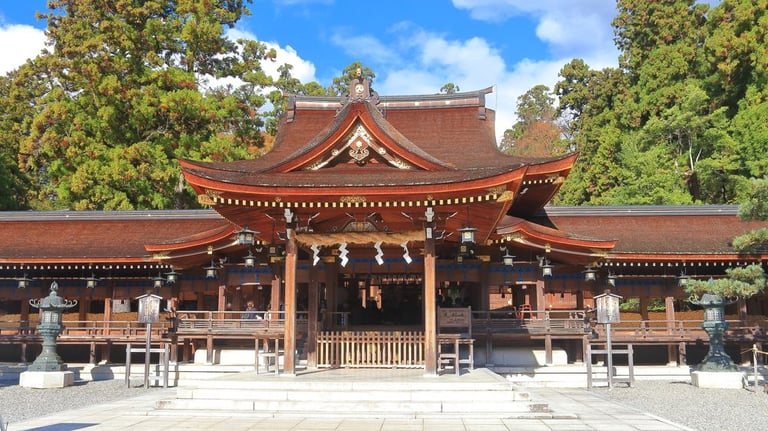

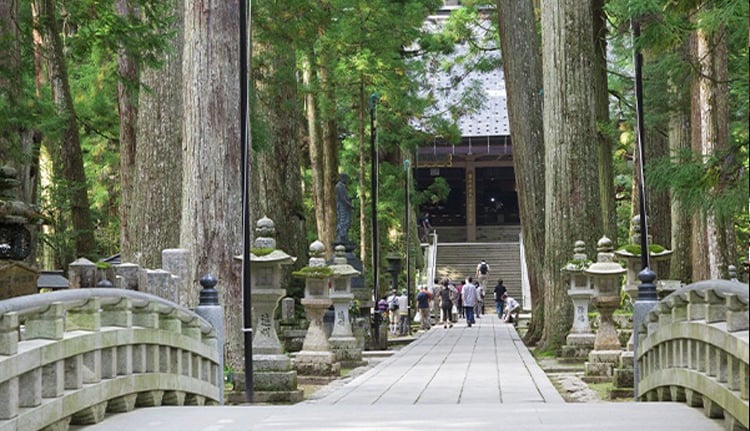

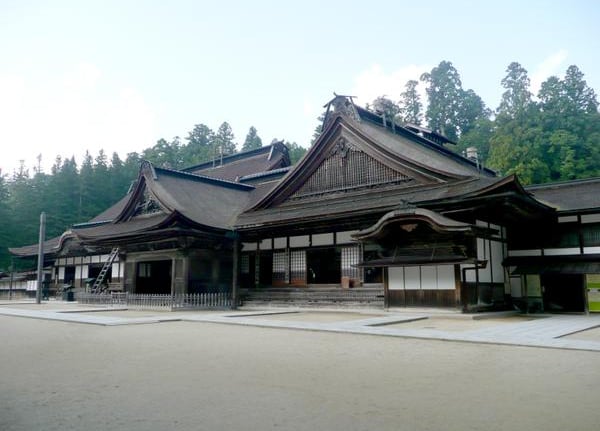

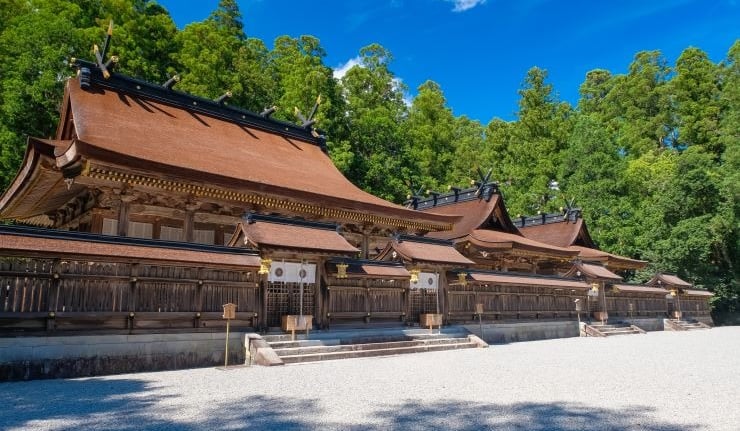

Wakayama Prefecture
Wakayama Prefecture is located in the Kinki region of Japan and is also known as “Kishu” area. It is a tourist destination where rich natural scenery and a deep historical cultural heritage coexist. In particular, don't miss religious sanctuaries such as Kumano Kodo and Koyasan, as well as family-friendly spots such as Shirahama Onsen and Adventure World. Below is some useful information for tourists visiting Wakayama Prefecture.
Okunoin is located a short distance from Kongobuji Temple, the center of Mount Koya, and is a sacred place where Kobo Daishi (Kukai), the founder of Shingon Buddhism, is said to have entered a state of eternal rest while meditating. Many worshippers come from all over Japan to visit, and it is popular not only as a place of faith, but also as a tourist destination to enjoy history and nature.
Okunoin
Kongobu-ji Temple
Kongobu-ji Temple is the head temple of the Shingon sect of Buddhism in Mount Koya, Wakayama Prefecture, and is a sacred site of Japanese Buddhism founded by Kobo Daishi in 816. The entire Mount Koya was registered as a UNESCO World Heritage Site in 2004 as "Sacred Sites and Pilgrimage Routes in the Kii Mountain Range," and Kongobu-ji Temple is a central tourist destination that draws many people.
Kumano Hongu Taisha
Kumano Hongu Taisha is a shrine located in Tanabe City, Wakayama Prefecture, and is an important sacred place that symbolizes the religious culture of Japan. It is known as one of the Kumano Sanzan (Kumano Hongu Taisha, Kumano Hayatama Taisha, and Kumano Nachi Taisha), and was registered as a UNESCO World Heritage Site in 2004 as "Sacred Sites and Pilgrimage Routes in the Kii Mountain Range." It has been the center of pilgrimages called "Kumano-mode" since ancient times.
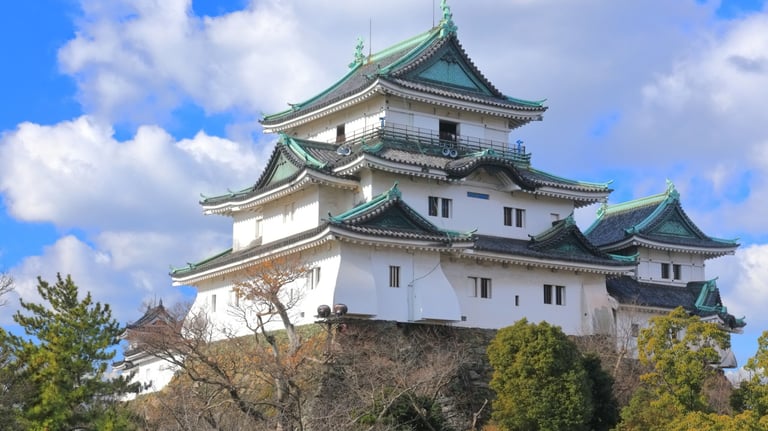

Wakayama Castle
Wakayama Castle is one of Japan's most famous historical castles, located in Wakayama City, Wakayama Prefecture, and is one of the famous castles built in the early Edo period. It was built by Toyotomi Hidenaga, the younger brother of Toyotomi Hideyoshi, and later developed as an important base during the reign of Tokugawa Ieyasu. It has also been selected as one of the "100 Most Famous Castles in Japan," and is currently a popular spot visited by not only locals but also many tourists from both Japan and abroad.
Nachi Falls
Nachi Falls, located in Nachikatsuura Town, Higashimuro District, Wakayama Prefecture, is one of Japan's most famous waterfalls, and is a special place where its magnificent scenery and deep religious culture come together. It has been chosen as one of Japan's 100 Best Waterfalls, with the highest drop of 133 meters, and has been revered as the center of Kumano faith since ancient times. It was registered as a UNESCO World Heritage Site in 2004 as part of the "Sacred Sites and Pilgrimage Routes in the Kii Mountain Range."
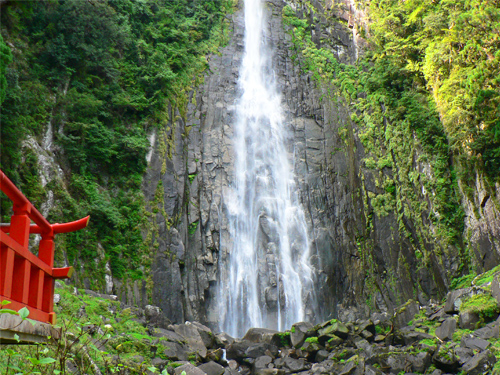

Nachisan Seigantoji Temple is an ancient temple of the Tendai sect located in Nachikatsuura-cho, Higashimuro-gun, Wakayama Prefecture, and is known as one of the Kumano Sanzan (three mountains in Kumano). It is said to have been founded in the 4th century and is one of the oldest Buddhist temples in Japan. It was registered as a UNESCO World Heritage Site in 2004 as “Sacred Sites and Pilgrimage Routes in the Kii Mountain Range,” and is a sacred site visited by many pilgrims and tourists.
Nachizanseigantoji Temple
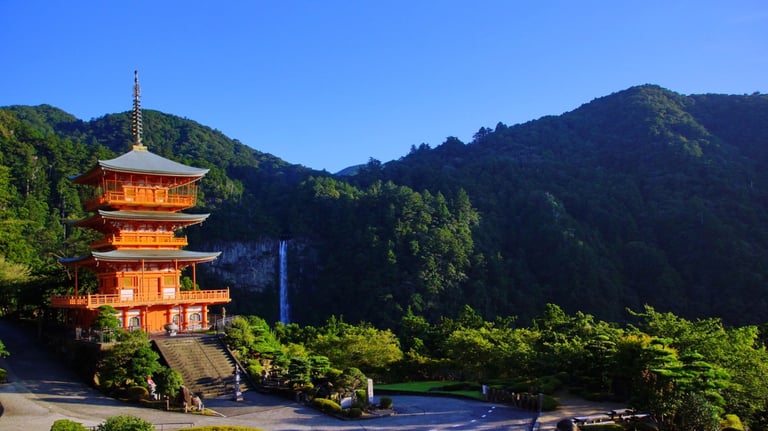

Dorokyo
Dorokyo is a gorge along the Kumano River located on the border of Nara, Wakayama, and Mie prefectures. Its magnificent natural scenery has earned it the nickname "Japan's hidden gem." It has been designated a national scenic spot and natural monument, and was registered as a UNESCO World Heritage Site in 2004 as part of the "Sacred Sites and Pilgrimage Routes of the Kii Peninsula." The beauty of the gorge, lined with oddly shaped rocks and cliffs, the clear flowing river, and the lush greenery of the surrounding area all combine to create a beautiful landscape that leaves a deep impression on visitors.
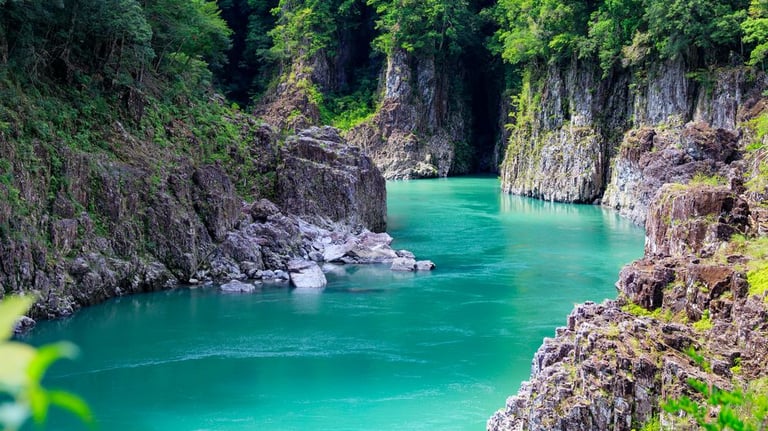

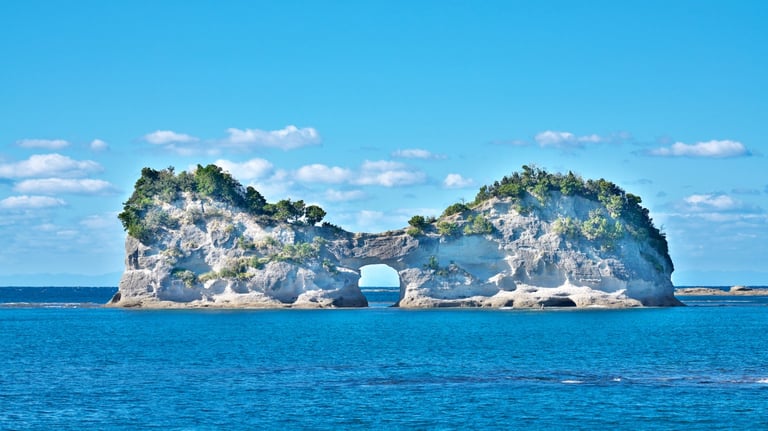

Engetsuto is a small uninhabited island in Shirahama Town, Nishimuro District, Wakayama Prefecture, and has been selected as one of the "100 Best Sunsets in Japan" due to its beautiful scenery. Its official name is "Takashima", but it is affectionately known as "Engetsuto". There is a large arch-shaped hole in the center of the island, and when the setting sun shines through it, it looks like a full moon, hence the name. It is known as one of the most scenic spots in Japan, and is a popular destination visited by many tourists.
Engetsuto
Hashigui-iwa
Hashigui-iwa is a group of oddly shaped rocks in Kushimoto-cho, Higashimuro-gun, Wakayama Prefecture, characterized by the beauty of its natural landscape and deeply connected with the Kumano Kodo pilgrimage route and Kumano worship. The 40 to 50 rock pillars of various sizes scattered along the coastline facing the Pacific Ocean resemble a series of bridge piles, hence the name “Hashigake Iwa” (bridge piles). This landscape is designated as a national natural monument, and the harmony of its beautiful appearance and the blue of the ocean attracts many tourists.
